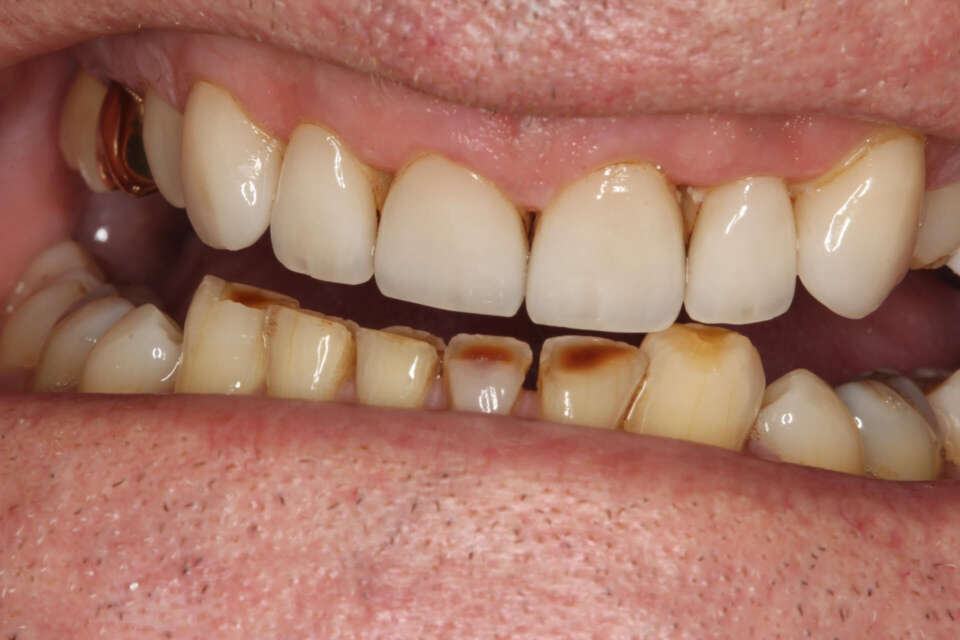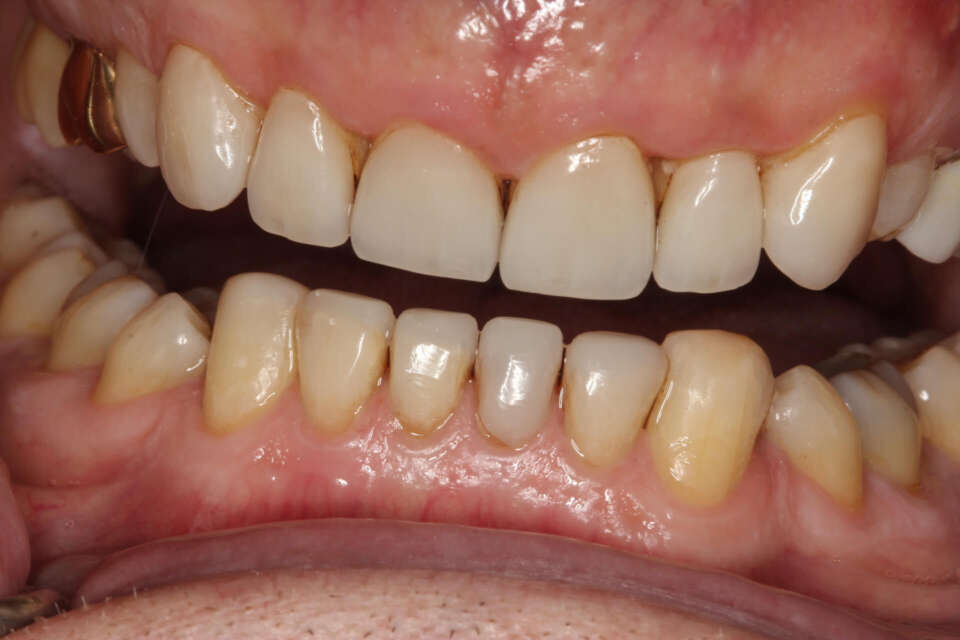Tooth wear is one of the most prevalent dental conditions that we see in practice day to day. It would not be an exaggeration to say that almost 90% of adult patients suffer from some form of tooth wear albeit to varying degree of severity. Minor tooth wear can lead to issues such as sensitivity to hot and cold whereas severe tooth wear can impair everyday function of chewing and mastication. Severe tooth surface loss will also cause a reduction in the occlusal vertical dimension (OVD) which is a measurement from under the nose to the chin. This will lead to a change in the shape of ones facial structure which is not desirable. The good news is that there are a number of treatments available that are minimally invasive, pain free and far less costly than traditional methods of reconstruction.
The Dahl Technique for Restoring Worn Front Teeth
Tooth Wear- an increasing dental issue |
What are the causes of tooth wear?One of the most common causes of worn teeth is bruxism. This is essentially night time grinding which can place enormous strain on the dentition and musculature. Some studies have shown that the average time for tooth to tooth contact whilst night grinding is between 3-4 hours. During the day, we generally only make contact for an average of 17-20 minutes. Hence, bruxism can account for 300 times greater tooth contact overnight! No wonder teeth start to wear down! |
What is the Dahl Technique?The concept was originally introduced in 1975 by a dentist called Dahl, to create space in the treatment of front teeth wear. It involved the patient wearing a removable, chrome-cobalt appliance with an anterior bite plate to separate the back teeth. This prevented the back teeth from closing down initially but he discovered that over time, the back teeth made contact. |
Our Case of the Month January 2023Our case is a classic one with severe lower front teeth wear and it got to the stage where the teeth were breaking apart. Something had to be done and the Dahl technique is ideal for the first stage treatment. |
Severe Front Teeth Wear

As you can see, the lower front 6 teeth are heavily worn down especially the front 4 incisor teeth.
After the Dahl treatment

Direct composite bonding has returned the teeth back to the normal dimensions and the OVD has been increased with an improved incisal guidance angle
Do you suffer from tooth wear?Suffering from tooth wear? Don't wait any longer. Our experienced dentist in Fulham offers personalised treatment solutions for long-lasting results. Contact us and let us guide you towards a healthier smile. |
